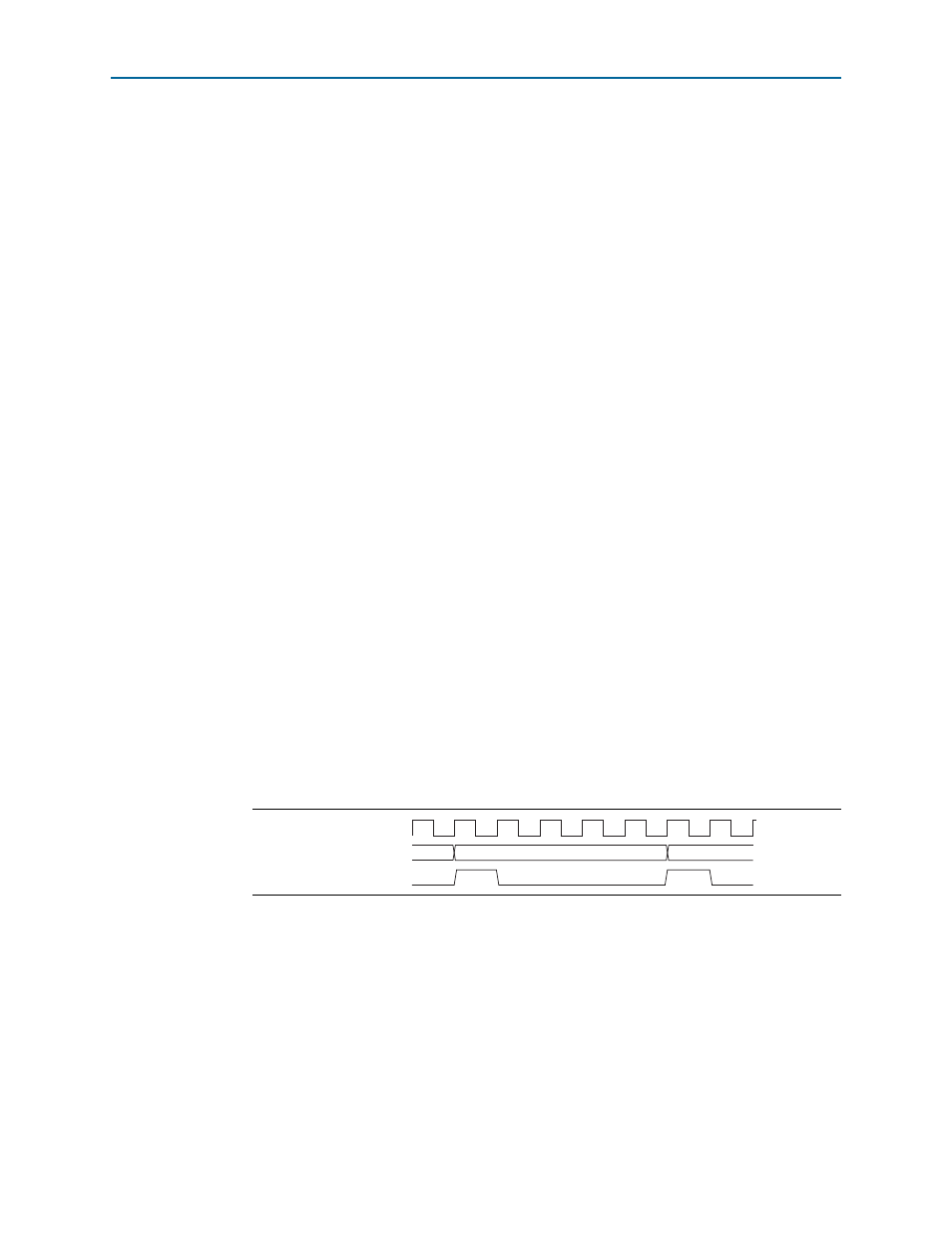Receiver transceiver interface, Receiver transceiver interface –24, Hd-sdi two-times oversampling – Altera Serial Digital Interface (SDI) MegaCore Function User Manual
Page 54: Sd-sdi transmitter oversampling, Sd-sdi receiver oversampling, Transceiver controller

3–24
Chapter 3: Functional Description
Block Description
Serial Digital Interface (SDI) MegaCore Function
February 2013
Altera Corporation
User Guide
For SD-SDI, the FIFO buffer also provides the rate conversion required by the
transmitter oversampling logic. It is written on every other tx_pclk, using the SD-SDI
data width conversion logic. It is read on every fifth or eleventh tx_coreclk. This
operation ensures that the transmitter oversampling logic is provided with a word of
parallel video data on every fifth or eleventh clock.
HD-SDI Two-Times Oversampling
This mode performs two-times oversampling and runs the transceiver at double rate,
which gives better output jitter performance. This mode requires a higher rate
reference clock, refer to
SD-SDI Transmitter Oversampling
SD-SDI requires a 270-Mbps serial data rate, which is achieved by transmitting a
1,350 Mbps signal with each bit repeated five times. This process ensures that the
transceiver runs at a supported frequency. In triple standard mode, bit are transmitted
at 2,970 Mbps with each bit repeated 11 times.
Receiver Transceiver Interface
Altera provides a transceiver interface, which interfaces the transceiver to the SDI
function. The transceiver interface implements the following functions:
■
■
SD-SDI Receiver Oversampling
Arria GX and Stratix II GX transceivers do not support CDR for data rates less than
622 Mbps. Arria II GX, Arria V, Stratix IV, and Stratix V transceivers do not support
CDR for data rates less than 600 Mbps. The receiver uses fixed frequency
oversampling for the reception of 270-Mbps SD-SDI. The transceiver samples the
serial data at 1,350 or 2,970 Mbps and the SD-SDI receiver oversampling logic extracts
the original 270 Mbps data.
shows an example of the receiver data timing.
Transceiver Controller
To achieve the desired receiver functionality for the SDI, the transceiver controller
controls the transceiver.
When the interface receives SD-SDI, the transceiver receiver PLL locks to the receiver
reference clock.
When the interface receives HD-SDI, the transceiver receiver PLL is first trained by
locking to the receiver reference clock. When the PLL is locked, it can then track the
actual receiver data rate. If a period of time passes without a valid SDI signal, the PLL
is retrained with the reference clock and the process is repeated.
Figure 3–13. Receiver Data Timing
rx_clk (67.5MHz)
rxdata
rx_data_valid_out
DATA
